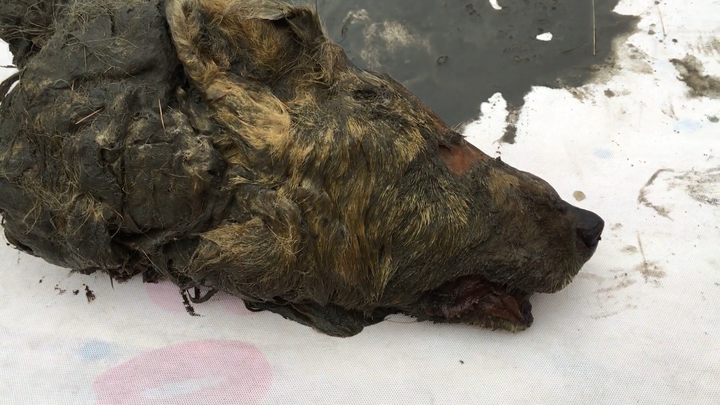A stunningly preserved head of a prehistoric wolf, estimated to be up to 40,000 years old, has been discovered in permafrost in eastern Siberia.
The furry remains were unearthed in Yakutia last year by a local man looking for mammoth ivory, but only recently revealed to the public by scientists at an exhibit in Tokyo, The Washington Post reported.
The discovery is the first of its kind, Albert Protopopov, director of the Academy of Sciences of the Republic of Sakha, where the head was taken, told CNN. Remains of frozen wolf cubs have been found in the past, he said.
“This is the first time the head of an ancient wolf has been found whose soft tissue has been preserved after 40,000 years, a grown wolf,” Protopopov said.
The wolf, a close relative of smaller modern-day wolves, was likely fully grown when it died, said Love Dalén, a paleontologist studying the head who dated it to the Pleistocene Epoch, around 30,000 years ago.
“There are numerous samples from them in terms of bones and teeth and so on, but this is the first frozen carcass from an adult wolf that has been found,” Dalén, of the Swedish Museum of Natural History, told the Post.

Additional studies will be done on the wolf’s DNA, fur and skull with help from other international scientists, Dalén said.
The melting of permafrost by rising global temperatures has led to an increase in similar discoveries, Dalén and Protopopov said. Other recent discoveries in the area include a cave lion cub and a woolly mammoth foot, which Dalén shared photos of on Twitter.
“Imagine the ground shaking as it walked the frozen steppe!” Dalén captioned his photo of the massive foot, which he said belonged to a male that had a shoulder height of 10.6 feet.
The Pleistocene Epoch, from 2.6 million to 11,700 years ago, was characterized by the presence of distinctive large land mammals and birds, as well as several climate shifts, according to the University of California’s Museum of Paleontology.
Scientists recently predicted in a study published in Environmental Research Letters that large parts of Asian Russia could become habitable for humans by the late 21st century due to climate change making the area warmer and milder.
Permafrost currently covers 65% of the Asian Russian land, but is forecast to diminish to about 40%, making the area seven times more favorable to humans, scientists said.
REAL LIFE. REAL NEWS. REAL VOICES.
Help us tell more of the stories that matter from voices that too often remain unheard.
Credit: Source link